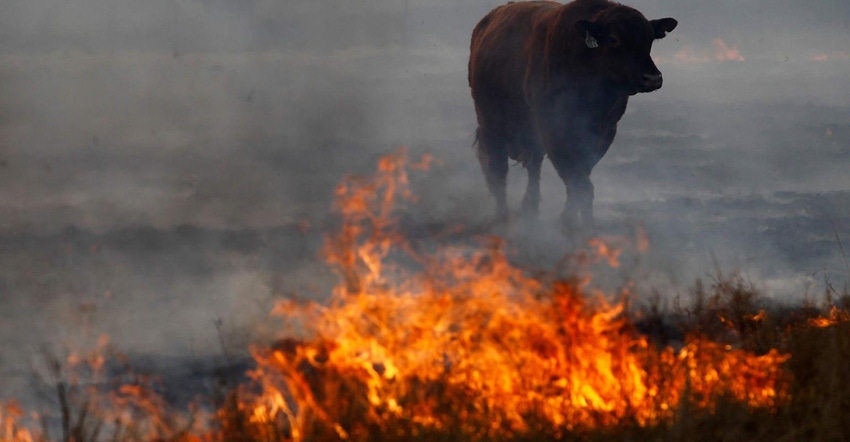Cattle moved to the frontlines in fight against wildfires
Targeted grazing in areas at greater risk for wildfires is reducing fuel for the flames and proving the value of keeping ruminant animals on the range.
October 3, 2020

My thoughts and prayers continue to be with my ranching friends in the west, who are going on six weeks of unrelenting fires that are ravaging homes, barns, animals and the precious landscape of forest and pastures where wildlife and livestock roam.
While the fires have been used by media pundits and politicians as a talking point to push stronger climate change measures, I think it’s important to continue to talk about the importance of responsible land management through strategic grazing and regular logging.
By doing this, we reduce the spread of wildfires by thinning the fuel that fans the flames. Dead timber, brush and leaves are the perfect kindling, just waiting for a match to strike. And as I’ve stated repeatedly, state and federal restrictions on land usage in our country have primed these wildfires to be hotter, larger and more devastating.
And anyone who has seen cattle in action grazing on the landscape can see the benefits of responsible land usage. On our ranch, an idle pasture can quickly become overgrown with underbrush and weeds, which stifles the new growth underneath. Rather, rotational grazing allows us to intensively graze an area, promoting new tender grass to grow in its place. By doing this, we also leave plenty behind for wildlife habitat.
Truly, when cattle graze the land under the guidance of responsible ranchers, we can see the range thrive.
READ: Log it, graze it or watch it burn
Don’t believe me? Well, check out how cattle are proving this very notion by working on the front lines of the wildfires.
According to an article by the USDA Agricultural Marketing Service (ARS), “Cattle grazing on a nearly half mile wide targeted strip of cheatgrass near Beowawe, Nevada, created a firebreak that helped limit a rangeland fire to just 54 acres this past August compared to rangeland fires that more commonly race across thousands of acres of the Great Basin. The same grazed fuel break held the Boulder Creek Fire in July 2018 to just 1,029 acres.
“This ‘targeted grazing’ firebreak and eight others are part of an evaluation project being managed by the Agricultural Research Service (ARS), partnering with other federal, state and local agencies and local cattle ranchers in Idaho, Nevada and Oregon. These demonstration sites are being studied so the concept’s efficacy and environmental impacts can be uniformly evaluated and compared.”
Pat Clark is an ARS Rangeland Scientist working with the Northwest Watershed Research Center in Boise, Idaho. Of the targeted grazing project, Clark says, “The basic idea is to use cattle grazing in the early spring to mow extensive strips of highly-flammable cheatgrass down to 2- to 3-inch stubble in strategic places to remove the fuel that can turn small rangeland fires into megafires in a matter of hours. These fuel breaks are intended to slow fire spread, make it less intense, and provides places from which firefighters can more safely attack and contain the fire.”
Clark is tracking the fuel reduced by targeted grazing and studying the environmental impacts based on changes in plant composition. According to the USDA, the Great Basin now has the nation’s highest wildfire risk, and rangeland fires are outpacing forest fires when it comes to acreage destroyed.
“The most challenging part of the project is getting the targeted grazing treatment applied within the narrow and dynamic window when cheatgrass is palatable and sought out by grazing cattle,” Clark said.
The opinions of Amanda Radke are not necessarily those of beefmagazine.com or Farm Progress.
You May Also Like


.png?width=300&auto=webp&quality=80&disable=upscale)
